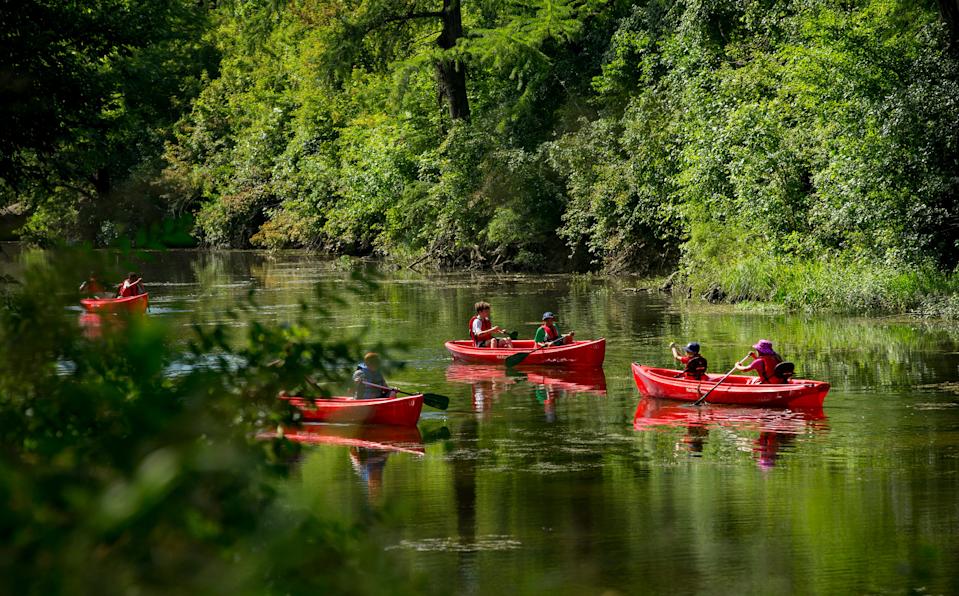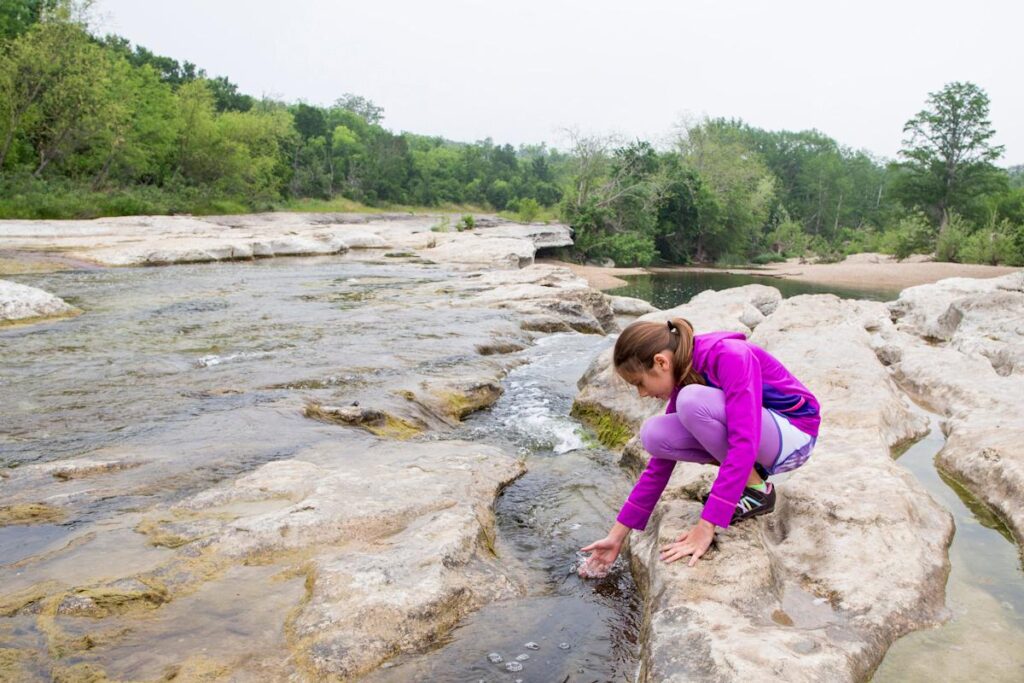In August 2024, a reader asked how Onion Creek — which flows from its source in eastern Blanco County to its mouth at the Colorado River in eastern Travis County — earned its name.
I did a little digging at the time, and queried some experts, but came up with no definitive answer.
So far.
A few quick facts about Onion Creek:
-
At 60 miles long, it is sometimes characterized as the lengthiest creek in Texas. In contrast, Barton Creek, which is no mere trickle for most of its run, is only 40 miles long.
-
Like all waterways that flow from the Hill Country, it is subject to devastating floods. During the Halloween Flood in 2013, after more than 10 inches of rainfall, it rose to 41 feet high and wiped out whole neighborhoods.
More on Onion Creek: Final evidence of early migrations in Onion Creek Metropolitan Park
-
Onion Creek rises 12 miles southeast of Johnson City and passes through or near Dripping Springs, Driftwood, Buda, Austin, Bluff Springs and Garfield.
-
Onion Creek formed the falls at McKinney Falls State Park. There, one can spot “swales” or ruts that indicate the path of El Camino Real de los Tejas, the historic trail the Spanish used to cross Texas. Similar swales can be found in Onion Creek Metropolitan Park.
Dogs can run off leash on the Onion Creek Greenbelt. In the 19th century, some people referred to the creek as Burro Creek or Garrapatas (“ticks”) Creek.
The earliest mentions of Onion Creek in the Democratic Statesman, which evolved into the American-Statesman, were published mere days after it was founded on July 26, 1871.
The earliest archival stories include:
-
An appeal from R.B. Faulkner and Ed Rust to find and return a “strayed or stolen” horse described as a “tall, light clay-bank mare, hog-backed, branded V low down on the left shoulder, had some saddle marks on the back.”
-
Notice of a Cumberland Presbyterian meeting at the creek near the San Antonio Road.
More on Onion Creek: Onion Creek, very long and sometimes treacherous
-
An apology from J.F. Oatman — likely connected to Oatmanville, now known as Oak Hill — to John T. Pruit of the Onion Creek settlement about an attack by state police during a political speech.
-
An offer for sale from Philip Golden and S.A. Golden “at public outcry, to the highest bidder, for cash, town lots in the town of Goldenville, Travis County, 10 miles south of Austin on the San Antonio Road on Onion Creek.”
This is the first I’ve heard of Goldenville. If you can run across any memories or remnants of it, please contact me.

Parts of 60-mile-long Onion Creek, including this stretch along a YMCA camp, are navigable.
Two of the best researchers on the local history scene are Rich Denney and Lanny Ottosen. Both replied to my queries.
“The Spanish called it Arroyo Garrapatas (which mean ticks),” Denney writes. “So they obviously did not come up with the name! Wild onions were cooked by Native Americans, for example, at Toyah Bluff along Onion Creek. And Onion Creek has bunches of Native American sites.
“Seem to remember the white flowers of wild onions are often an indicator of Native American campsites,” Denney continues. “I do remember reading cooked wild onions in abundance were (found) in the middens at Toyah Bluff on Onion Creek.”
Thanks, Rich, for this promising start.
Ottosen, whose special historical field is southeastern Travis County, writes that he has searched deeply for the origin of the creek’s name with no success, although he likes Denney’s angle. He wonders how the name ended up on maps from the 1830s.
“The two large surveys that bound each side of Onion Creek, the Del Valle, and the Navarro — or Caldwell — were both surveyed and issued in June and July 1832,” Ottosen writes. “Predating those surveys by just a month is Stephen F. Austin’s letter written from Saltillo to Samuel Williams dated May 8, 1832.”
Ottosen quotes from Stephen F. Austin’s letter about land he wanted to acquire, and he included a sketch, which the earlier researcher used to locate definitively the colonist’s intended home at Laguna Gloria. Austin writes about land “on the west side of Colorado, bounding on Onion Creek (Burro, or Garrapatas).”
More on Stephen F. Austin: ‘Nobody would ever find him’: Stephen F. Austin wanted to retire to what is now Austin
The Del Valle title describes the same. The title to Jose Antonio Navarro’s seven leagues on the opposite side of the creek from the Del Valle grant states: “The survey beginning at the exact point where the creek that is called ‘Burro’ or ‘Garrapatos’ and by some ‘Onion Creek’ flows into the said Colorado River.”
Ottosen: “I always thought it was interesting the Navarro Grant says called ‘by some Onion Creek.’ Who were the ‘some’ and why?”
Both these grants were available for claim because the Mexican government had declared them part of vacant lands from the defunct Milam Colony.
“Austin, Del Valle and three other Mexicans knew of the 10-league site that would become the Del Valle grant and they all pursued it,” Ottosen writes. “I have speculated that each of these had seen a map of the Milam Colony and, when it went defunct, they knew which tracts they wanted.”
Ottosen includes digital links to two maps housed in the Milam County Collections at the Texas General Land Office.
By the way, those maps include claims made by people after whom more Austin places are named: Slaughter, Burleson and William Cannon.
Send tips and questions to [email protected].
This article originally appeared on Austin American-Statesman: Searching for the origins of the onions of Onion Creek south of Austin
Read the full article here


